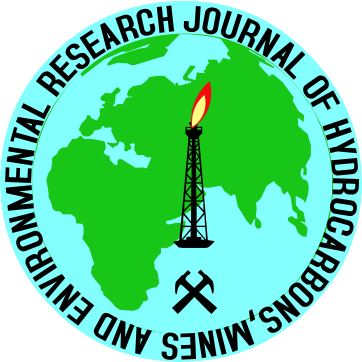JOURNAL OF HYDROCARBONS MINES
AND ENVIRONMENTAL RESEARCH
__________________
 |
©
Journal of Hydrocarbons Mines and Environmental Research, ISSN: 2107-6510,
Volume 3, Issue 2, December 2012, 23-30 __________________________________________________________________________________________________ |
Contribution à la connaissance de la bathymétrie et de la distribution spatiale de N, P, K de la vase du lac Tonga encombré de végétation (Extrême NE algérien)
Hacène Alayat *, Rachida Satouh and Samia Mouissi
Laboratoire agriculture et fonctionnement des écosystèmes, Université d’El Tarf, 36000 El Tarf, Algeria
* corresponding author: alayathacene@yahoo.fr (H. Alayat)
Received: 12 December 2012 - Accepted: 7
May 2013 - Available online: 7 May 2013
Résumé: Ce lac exoréique, d'une superficie de 20 km2 environ, est en communication avec la mer méditerranée par le canal artificiel Messida. Il est situé à l'extrême NE algérien (36°53’N-08°31’E), à une altitude de 10 m environ. Sa partie navigable d’une superficie de 2.56 km2 représente 12.8% de la superficie du lac. Il est alimenté par de nombreux affluents. Les plus importants sont les oueds El Hout et Medjdour. Le lac Tonga est classé zone humide d'intérêt mondial aux termes de la convention de Ramsar, depuis 1983.
La lac Tonga est recouvert à 90% par une végétation émergente, avec de grandes plages d’eau libre occupées partiellement par le nénuphar blanc et abritant une diversité biologique très importante. Certaines espèces sont classées assez rares et protégées (Marsilea diffusa, Nymphaea alba Utricularia exoleta, etc.).
Les mesures bathymétriques et les prélèvements de la vase, destinés aux analyses physico-chimiques, ont été effectués le long de quatre coupes. Les premiers résultats qui couvrent tout le plan d’eau, peu profond, montrent un fond plat et régulier, recouvert généralement d’une couche de vase grisâtre (fer réduit), de quelques centimètres. L’épaisseur de la lame d’eau ne dépasse guère les 3 m, en période de hautes eaux.
Les analyses physico-chimiques se sont révélées d’un apport considérable pour identifier un substrat caractérisé par une tendance sableuse (limono-argilo-sableux, sableux) riche en azote total, phosphore et potassium. Les teneurs élevés du phosphore assimilables et de l'azote dans la vase stimulent ainsi la croissance et la multiplication des plantes aquatiques, ce processus naturel peut, à long terme, transformer le lac en tourbière et finit par l'assécher, si aucune mesure n'est entreprise.
Mots clés: Lac Tonga, bathymétrie, azote, phosphore, potassium.
Contribution to the knowledge of the bathymetry and the spatial distribution of N, P, K of the mud of Tonga lake with luxuriant vegetation (extreme NE Algeria)
Abstract: Tonga lake is an exoreic lake with an area of 20 km2, connected to the Mediterranean sea by the artificial Messida channel. It is located in the extreme NE Algeria (36°53'N-8°31'E), at an altitude of 10 m. Its navigable part of an area of 2.56 km2 represents 12.8% of the lake area. It is fed by many tributaries. The most important are the wadis El Hout and Medjdour. Tonga lake is classified wetland of global interest in the terms of the Ramsar convention, since 1983.
The lake is covered to 90% by emergent vegetation, with great beaches open water partially occupied by the white water lily and housing a very important biodiversity. Some rare species are classified and protected (Marsilea diffusa, Nymphaea alba Utricularia exoleta, etc.).
Bathymetric measurements and the sampling of mud for physico-chemical analyses were made along four transects. The first results which cover all the water level, not very deep, show a flat and regular bottom, generally covered with a layer of vases, of a few centimetres; the thickness of the water blade hardly exceeds 3 m, in the period of high water.
The physico-chemical analyses proved a significant contribution to identify a substrate characterized by a sand tendency (silty-sandy and silty-clay-Sandy textures), rich in total nitrogen, phosphorus and potassium. High levels of assimilable phosphorus and nitrogen in the mud thus stimulate the growth and proliferation of aquatic plants, this natural process can, at long-term, transform the lake into bog and eventually into land, if no action is taken.
Keywords: Tonga lake, bathymetry, nitrogen, phosphorus, potassium.